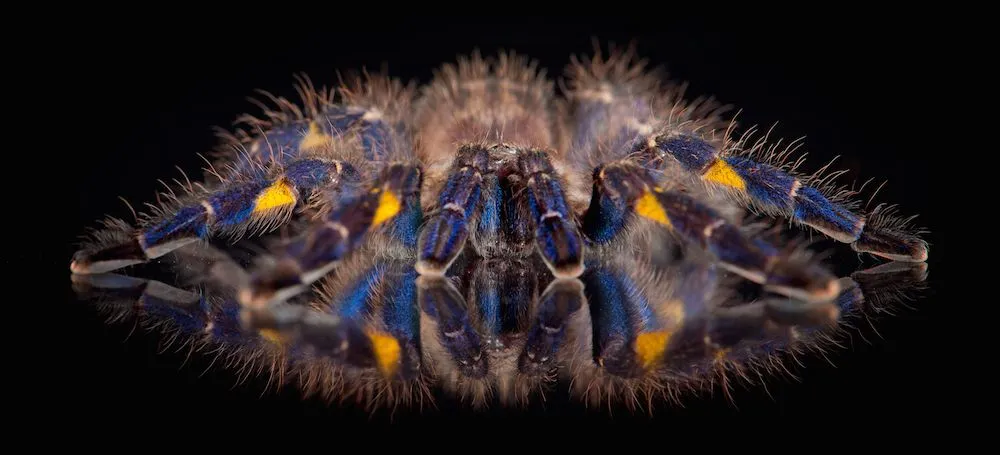The captivating world of tarantulas holds a special place for the vibrant blue tarantula. These arachnids are not only visually stunning but also fascinating in their behavior, habitat, and conservation needs. This guide uncovers seven compelling facts about the blue tarantula, offering a comprehensive look at these remarkable creatures. From their striking appearance to the challenges they face in the wild, discover what makes blue tarantulas a unique subject of study and admiration. Whether you’re a seasoned arachnid enthusiast or a curious newcomer, prepare to be amazed by the hidden depths of the blue tarantula’s existence.
What is a Blue Tarantula
Blue tarantulas are a group of tarantula species known for their striking blue coloration, which can range from a deep cobalt to a lighter, iridescent hue. This coloration is not due to pigment, but rather to the structure of the hairs on their bodies, which reflect light in a way that produces the blue effect. These spiders are typically found in tropical environments and are popular in the pet trade due to their unique appearance. They are generally medium-sized tarantulas, with females often larger than males. Blue tarantulas are primarily nocturnal and spend their time hiding in burrows or under objects during the day.
Appearance and Identification
Identifying a blue tarantula is relatively straightforward due to their distinct coloration. However, the intensity and shade of blue can vary depending on the species and individual spider. The overall body structure is typical of tarantulas, with a cephalothorax (fused head and thorax) and an abdomen. The legs and pedipalps (small appendages near the mouth) are often the primary areas displaying the blue coloration, though the abdomen can sometimes have hints of blue as well. Observe the presence of urticating hairs on the abdomen, which the tarantula can flick off as a defense mechanism. When identifying, note the presence or absence of any distinctive patterns or markings, which can vary between different species.
Size and Physical Characteristics
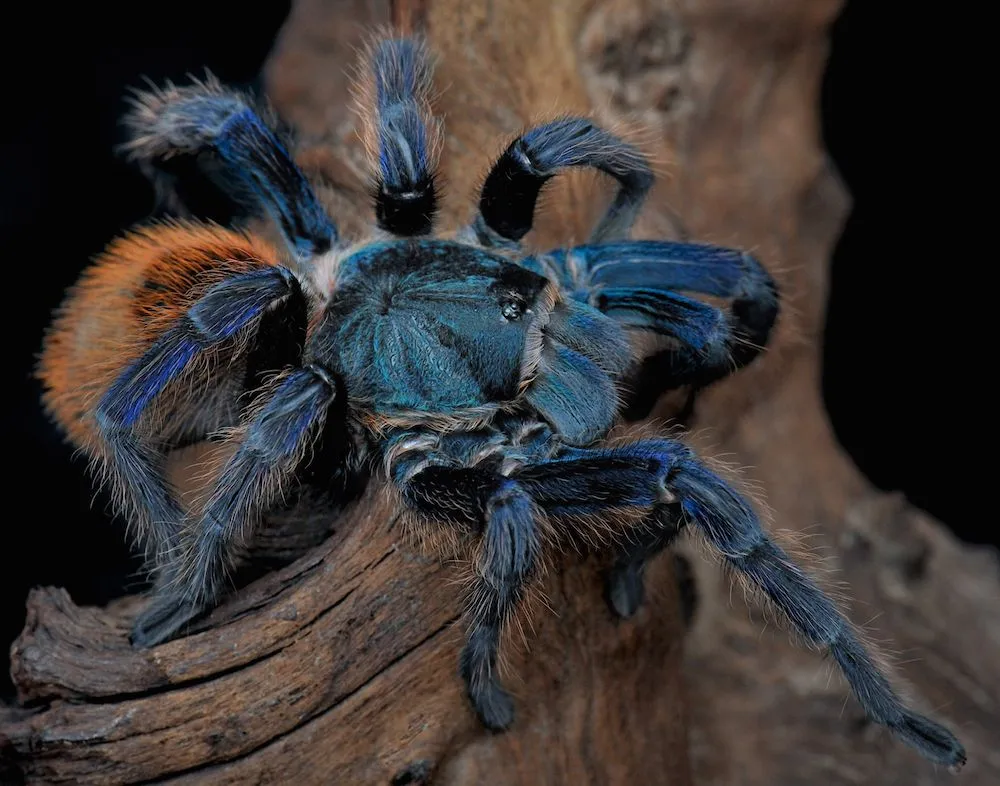
Blue tarantulas, though varying among species, generally range in size from medium to large. The overall size of the spider is often measured by its leg span, which can extend up to 6-8 inches or more, particularly in mature females. Females tend to be larger than males, a common trait among tarantulas. The cephalothorax is usually well-defined, and the abdomen appears rounded, especially after feeding. Their bodies are covered in fine hairs, the structural basis for their blue coloration. The presence of urticating hairs is a crucial physical characteristic as these can cause irritation upon contact. Overall body color varies, but it’s common to find legs and pedipalps that show vibrant blue hues. Consider also the size of the fangs, as these are important for catching prey and self-defense.
Where Do They Live
Natural Habitats
Blue tarantulas thrive in specific habitats, mainly within tropical and subtropical regions. They typically reside in warm, humid environments, often found in areas with dense vegetation and access to ground cover. The natural habitats can include rainforests, savannas, and even some arid environments with specific microclimates. These spiders are typically terrestrial or burrowing, preferring to create or find shelter in the soil, under rocks, or within leaf litter. Understanding the habitat of blue tarantulas is essential for their conservation. These environments provide the necessary conditions for them to thrive and are directly related to their survival. The habitats of blue tarantulas are also highly sensitive to environmental changes, such as deforestation, which poses a threat to their survival.
Geographic Distribution
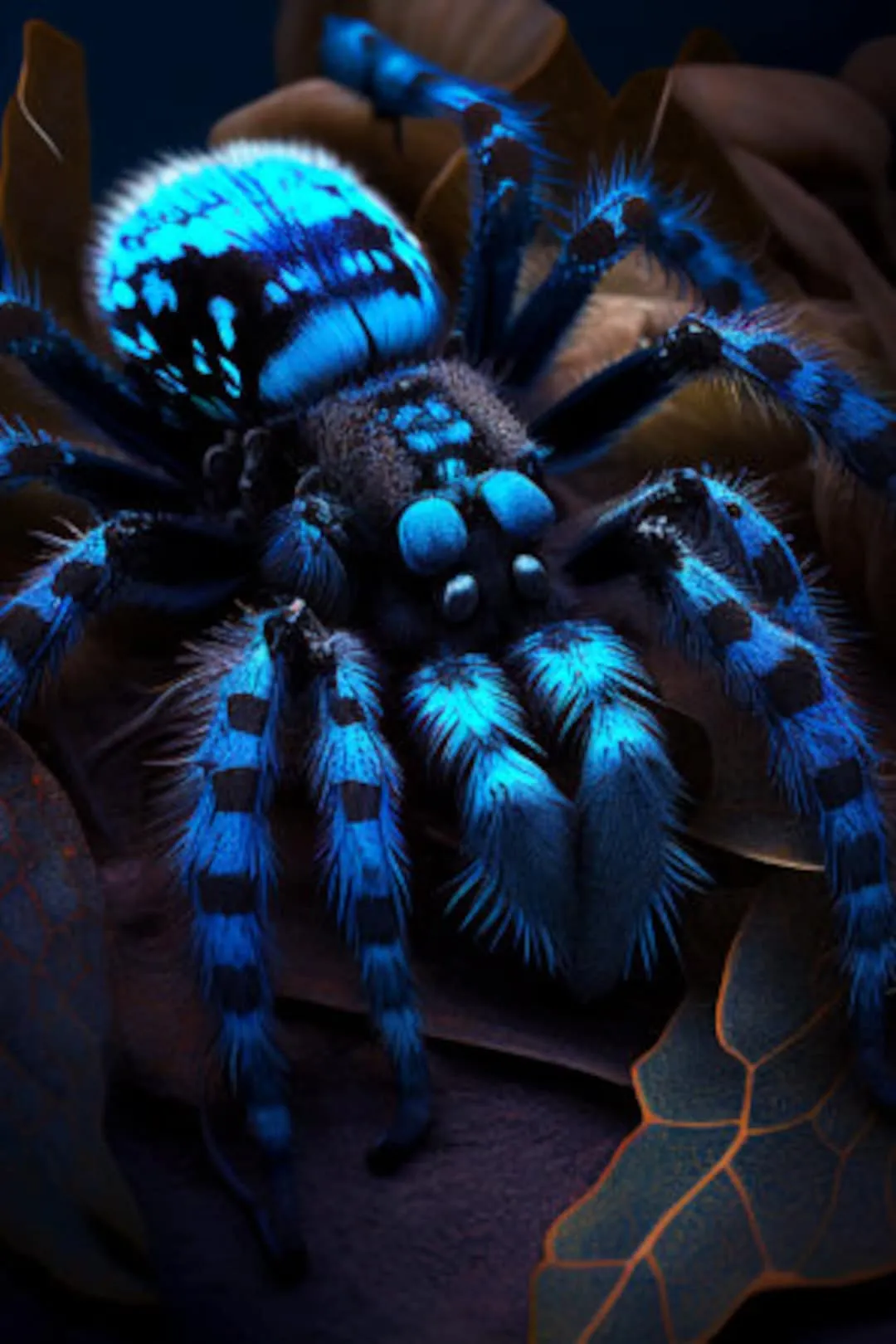
Blue tarantulas are not found worldwide but are localized to specific geographic regions. The precise distribution varies depending on the species, but common locations include parts of Southeast Asia, specifically Thailand and Vietnam. Within these regions, they can be found in localized areas with suitable habitats. The geographic distribution of the blue tarantula is constrained by the availability of their preferred environmental conditions, including temperature and humidity. Understanding the distribution helps conservation efforts and helps to estimate how vulnerable the population is. Studying their geographical spread can also provide insight into the species’ adaptability and potential risks they may face due to environmental changes. Some species of blue tarantulas are very rare and have a very restricted range.
Behavior and Lifestyle
Feeding Habits
Blue tarantulas, like all tarantulas, are carnivorous predators with a voracious appetite. Their diet mainly consists of insects, such as crickets, roaches, and mealworms, readily available in their natural habitats. They are opportunistic feeders, so they will consume whatever prey they can subdue. Their feeding behavior typically involves ambushing prey, injecting venom, and then consuming the liquefied remains. They are not picky eaters, and the size of the prey generally depends on the size of the tarantula. Juvenile blue tarantulas typically eat smaller insects, while adults will take larger prey. The eating habits are also influenced by environmental factors, such as temperature and humidity. They generally eat more during warmer periods because their metabolism is faster and, therefore, require more sustenance.
Defense Mechanisms
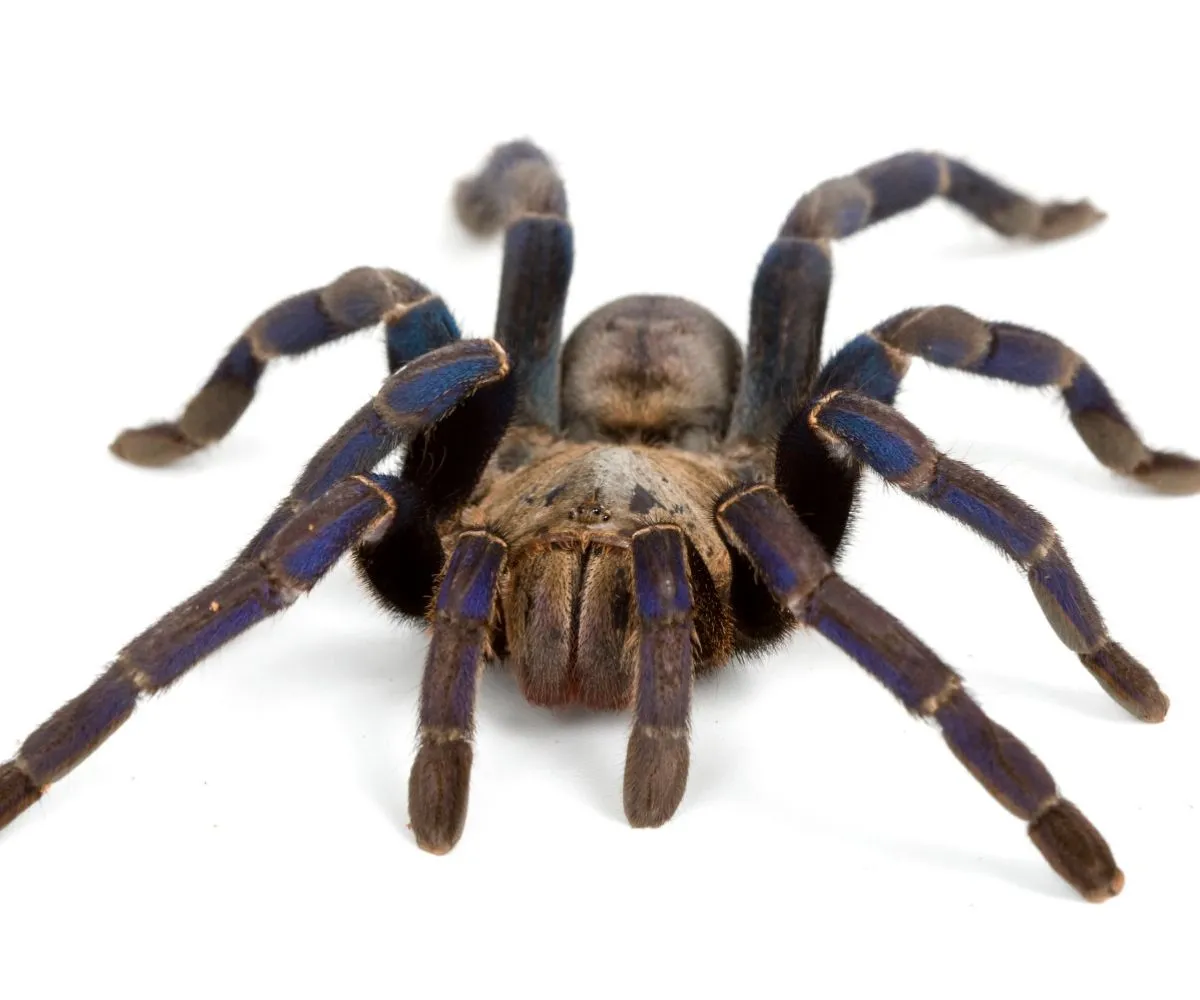
Blue tarantulas possess several defense mechanisms to protect themselves from predators. One primary defense strategy is the use of urticating hairs, which are located on their abdomen. When threatened, they can flick these tiny, irritating hairs towards the perceived danger, causing skin irritation and discomfort. Another form of defense is their ability to quickly retreat into burrows or other hiding spots. These spiders can also bite as a last resort, injecting venom that is generally not lethal to humans but can cause localized pain and discomfort. The vibrant blue coloration may also serve as a warning signal, potentially indicating the tarantula’s venomous nature to predators. They may also raise their front legs as a threat display.
Conservation Status
Threats to Survival
Blue tarantulas face various threats that affect their survival in the wild. Habitat loss due to deforestation and urbanization is a significant factor, as it reduces the availability of suitable living environments. The pet trade is another major threat, as these spiders are in high demand, leading to over-collection from their natural habitats. Climate change poses another significant challenge, as alterations in temperature and humidity can negatively affect the spiders and their prey. Pollution and the use of pesticides also impact their survival, poisoning the environments and reducing the availability of food. Invasive species can pose a threat by competing with native species for resources or preying on the blue tarantulas. All these threats are causing their populations to decline, making conservation efforts essential.
Conservation Efforts
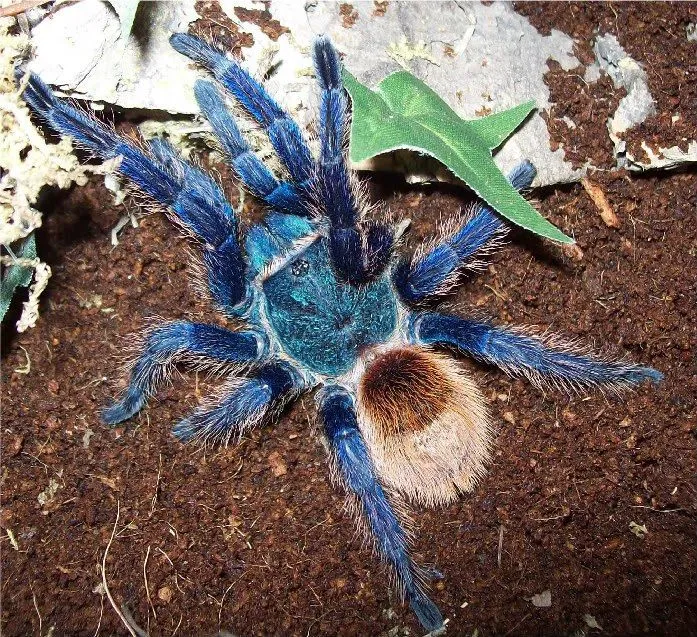
Numerous conservation efforts are underway to protect blue tarantulas and their habitats. These include habitat preservation and restoration, as well as stricter regulations on the pet trade to prevent over-collection. Research and monitoring programs help in understanding the species’ populations and ecological needs. Public awareness campaigns and educational initiatives are essential to inform people about the importance of the blue tarantulas and their preservation. Captive breeding programs are important for providing the pets without the use of wild-caught specimens. International cooperation and legislation, such as CITES, also play a significant role in regulating trade and protecting vulnerable species. Active participation in conservation projects ensures the survival of these unique and fascinating creatures.
Interesting Facts about Blue Tarantulas
Unique Characteristics
Blue tarantulas are famous for their unique blue coloration, which is caused by structural coloration. They are relatively long-lived compared to other arachnids, with some species living for over a decade in captivity. Their venom is not lethal to humans, but it can cause localized pain and discomfort. They are masters of camouflage, utilizing burrows and ground cover to their advantage. Furthermore, they undergo a molting process, shedding their exoskeleton and growing larger, during which their colors can appear even more vibrant. Their care requirements are relatively easy compared to other exotic pets. The blue tarantula is fascinating, and they continue to intrigue scientists and enthusiasts alike.
Lifespan and Reproduction
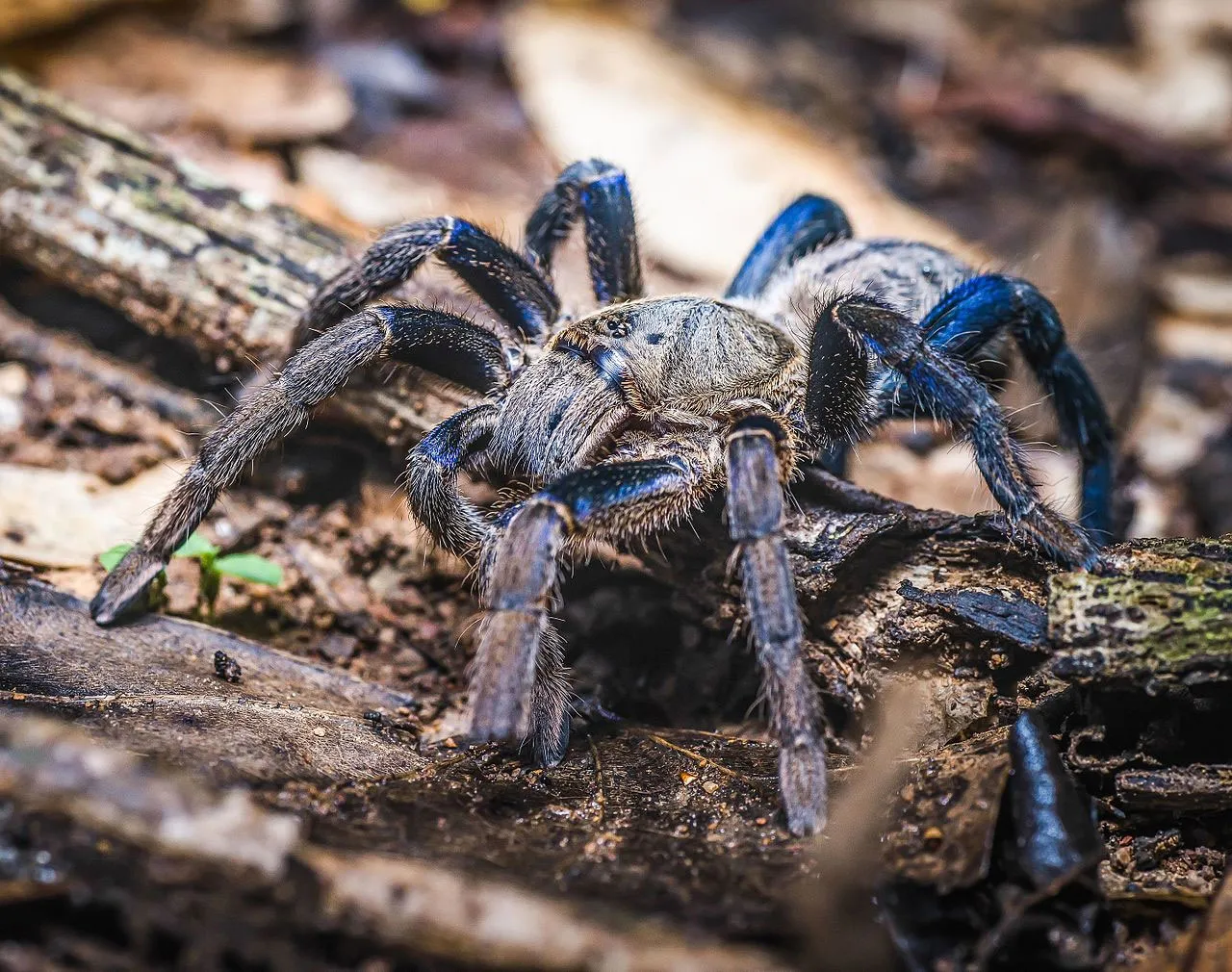
The lifespan of blue tarantulas varies depending on the species, with females generally living longer than males. Females can live up to 10-12 years or more, while males typically live for only 2-3 years after reaching maturity. Their reproductive cycle involves the male tarantula creating a sperm web and transferring sperm to the female during mating. After mating, the female will lay eggs in a silken egg sac, protecting the eggs until they hatch. The spiderlings will go through several molts during their development until they reach adulthood. Their lifespan can be influenced by environmental factors, such as temperature and humidity, and by their diet.
In conclusion, the blue tarantula is a captivating species, with its striking appearance and fascinating behaviors. Their survival, however, faces constant threats due to habitat loss and over-collection. Ongoing conservation efforts and increased awareness are essential to ensure the long-term survival of these remarkable creatures. By understanding their unique characteristics, supporting conservation initiatives, and promoting responsible pet ownership, we can help protect and preserve the vibrant world of blue tarantulas for generations to come.
